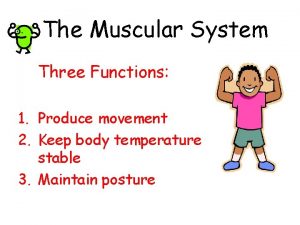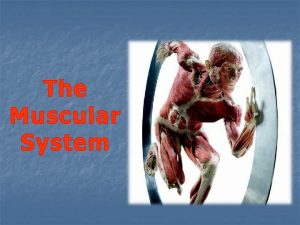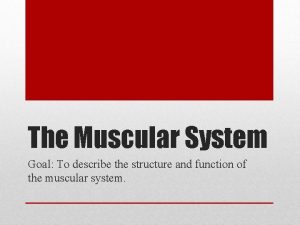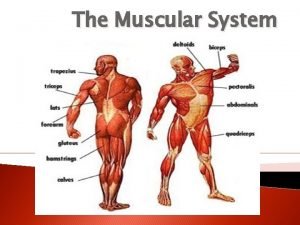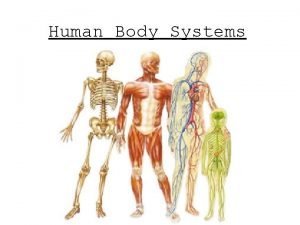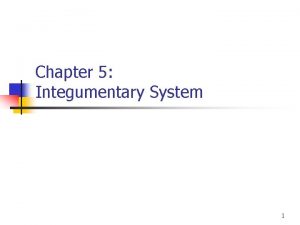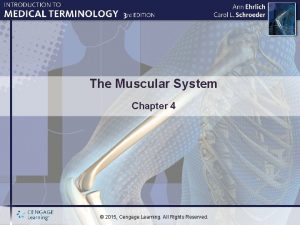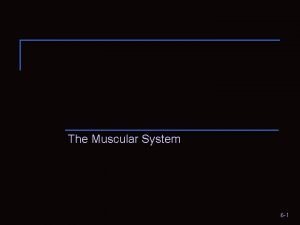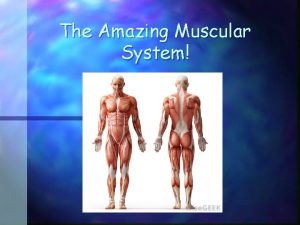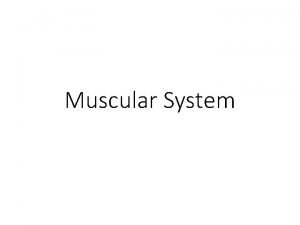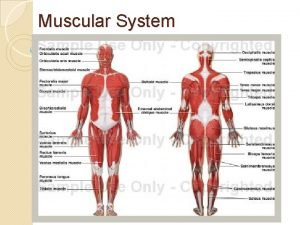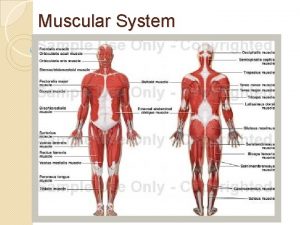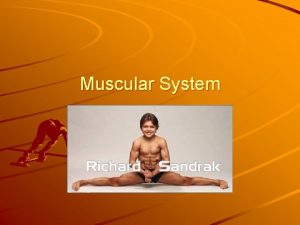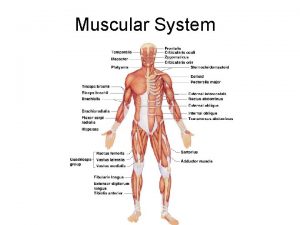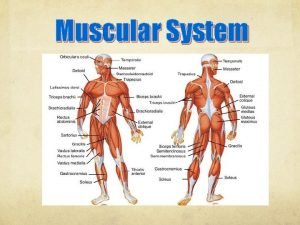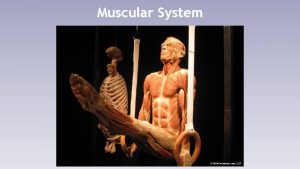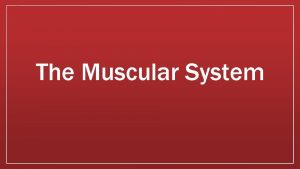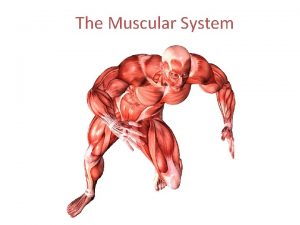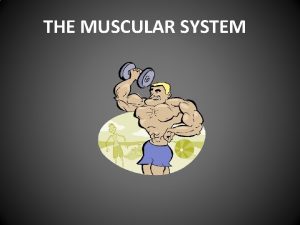The Muscular System Three Functions 1 Produce movement













- Slides: 13

The Muscular System Three Functions: 1. Produce movement 2. Keep body temperature stable 3. Maintain posture

Movement – muscles that produce movement. • Muscular system works with skeletal system to allow movement. • Muscles are made up of individual cells called muscle fibers – contract and relax. • Work in pairs – one contracts, one relaxes. • Muscles are attached to bones by stretchy connective tissue called tendons

Muscles Maintain Body Temperature • Homeostasis – the balance of body conditions (temperature, water, food, etc. ) • Muscles function to maintain body temperature • When muscles contract, they release heat. – Ex: shivering produces heat.

Maintaining Posture • Most muscles are always a little bit contracted – makes you stand up straight. • These muscles only relax when you are unconscious. • Muscles make adjustments to keep you standing up straight.

Different Types of Muscles • All 3 types of muscles contract and relax • Skeletal (Voluntary) • Smooth (Involuntary) • Cardiac muscle (Involuntary)


Skeletal Muscle (Voluntary) • Muscles that are attached to our skeleton • Perform voluntary (you choose) movement: long fibers: slow-twitch muscles – allow to move slowly fast-twitch muscles – allow to move quickly

Skeletal Muscle Tissue

How do muscles move? Muscles that move your bones work in pairs. When one contracts, the other must relax. For example, your bicep must relax and lengthen when your triceps contract and shorten.

Smooth Muscle - Involuntary • Found inside some organs, such as intestines and stomach. • Perform automatic movement – work without you knowing it. – Ex: push food along digestive system. – Fibers not as long as skeletal muscle fibers. – Not fast-twitch. – Smooth muscles contract slowly

Smooth Muscle Tissue • Small intestine muscle tissue

Cardiac Muscle • Heart is a Cardiac Muscle - involuntary • Moves without conscious control. • Contracts slowly. Picture of Cardiac Muscle Tissue

Allowing Bones to Move • Skeletal muscles are attached to bones by strong tissues called tendons. • Tendons on the end of each muscle attach firmly to the bone. • As fibers in muscles contract, they shorten and pull the tendon. The tendon pulls the bone and makes it move. • Do this: • Place your left arm, stretched out flat in front of you on a table. Place the fingers of your right hand just above your left elbow. Bend your elbow and raise and lower your left arm. You are contracting your biceps. Can you feel the muscle pull on the tendon? • Exercise regularly, the muscles will get bigger.
 How do muscles work in pairs
How do muscles work in pairs Plyometrics disadvantages
Plyometrics disadvantages What is the primary function of the muscular system
What is the primary function of the muscular system 5 function of muscular system
5 function of muscular system Muscular syst
Muscular syst 3 function of the muscular system
3 function of the muscular system During our lives we produce three kinds of hair
During our lives we produce three kinds of hair Movement and non-movement area
Movement and non-movement area Is spinning a locomotor movement
Is spinning a locomotor movement Neuron anatomy
Neuron anatomy Dorsiflexion word parts
Dorsiflexion word parts Muscular system figure
Muscular system figure Amazing facts about the muscular system
Amazing facts about the muscular system Greek and latin roots jeopardy
Greek and latin roots jeopardy
